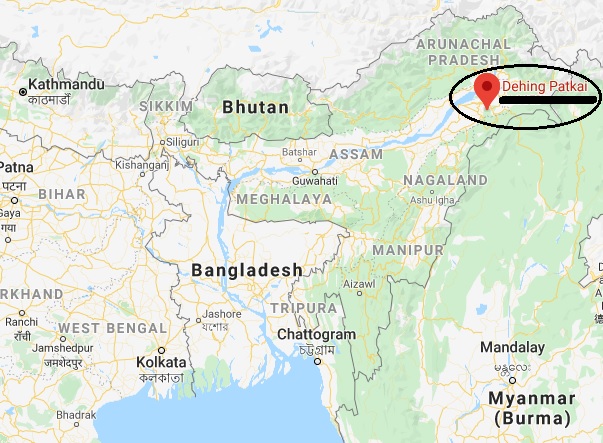Biodiversity & Environment
Dehing Patkai Wildlife Sanctuary
- 11 Jul 2020
- 4 min read
Why in News
The Assam government has decided to upgrade Dehing Patkai Wildlife Sanctuary into a National Park.
- The announcement comes just months after the National Board of Wildlife (NBWL) gave conditional clearance to a coal mining project by Coal India Limited (CIL) in the Dehing Patkai Elephant Reserve.
Key Points
- As a national park, its importance will increase and new rules will bring increased vigilance to the area. While the first proposal to accord national park status to the region dates back to 1995, Dehing Patkai was declared a wildlife sanctuary in 2004.
- Description: Dehing Patkai Wildlife Sanctuary is located within the larger Dehing Patkai Elephant Reserve, which spreads across the coal- and oil-rich districts of Upper Assam (Dibrugarh and Tinsukia districts).
- The Dehing Patkai Wildlife Sanctuary is also known as the Jeypore Rainforest.
- Dehing is the name of the river that flows through this forest and Patkai is the hill at the foot of which the sanctuary lies.
- The oldest refinery of Asia in Digboi and ‘open cast’ coal mining at Lido are located near the sanctuary.
- It is famous for Assam Valley Tropical Wet Evergreen Forests bordering Arunachal Pradesh.
- Fauna: Rare fauna found in the region include Chinese pangolin, flying fox, wild pig, sambar, barking deer, gaur, serow and Malayan giant squirrels.
- It is the only sanctuary in India which is home to seven different species of wild cats - tiger, leopard, clouded leopard, leopard cat, golden cat, jungle cat and marbled cat.
- Assamese macaque, a primate found in the forest, is in the red list of Near Threatened species.
- It has the highest concentration of the rare endangered White Winged Wood Duck.
- Flora: Dehing Patkai is a deciduous rainforest interspersed with semi-evergreen and lush green flora.
- Sixth National Park: Post upgradation, Dehing Patkai will be the sixth national park in Assam — the other five being Kaziranga, Nameri, Manas, Dibru-Saikhowa and Rajiv Gandhi Orang National Park.
| National Parks |
Wildlife Sanctuaries |
|
|
|
|
|
|
|
|
|
|
|
|
|
|
|
|







